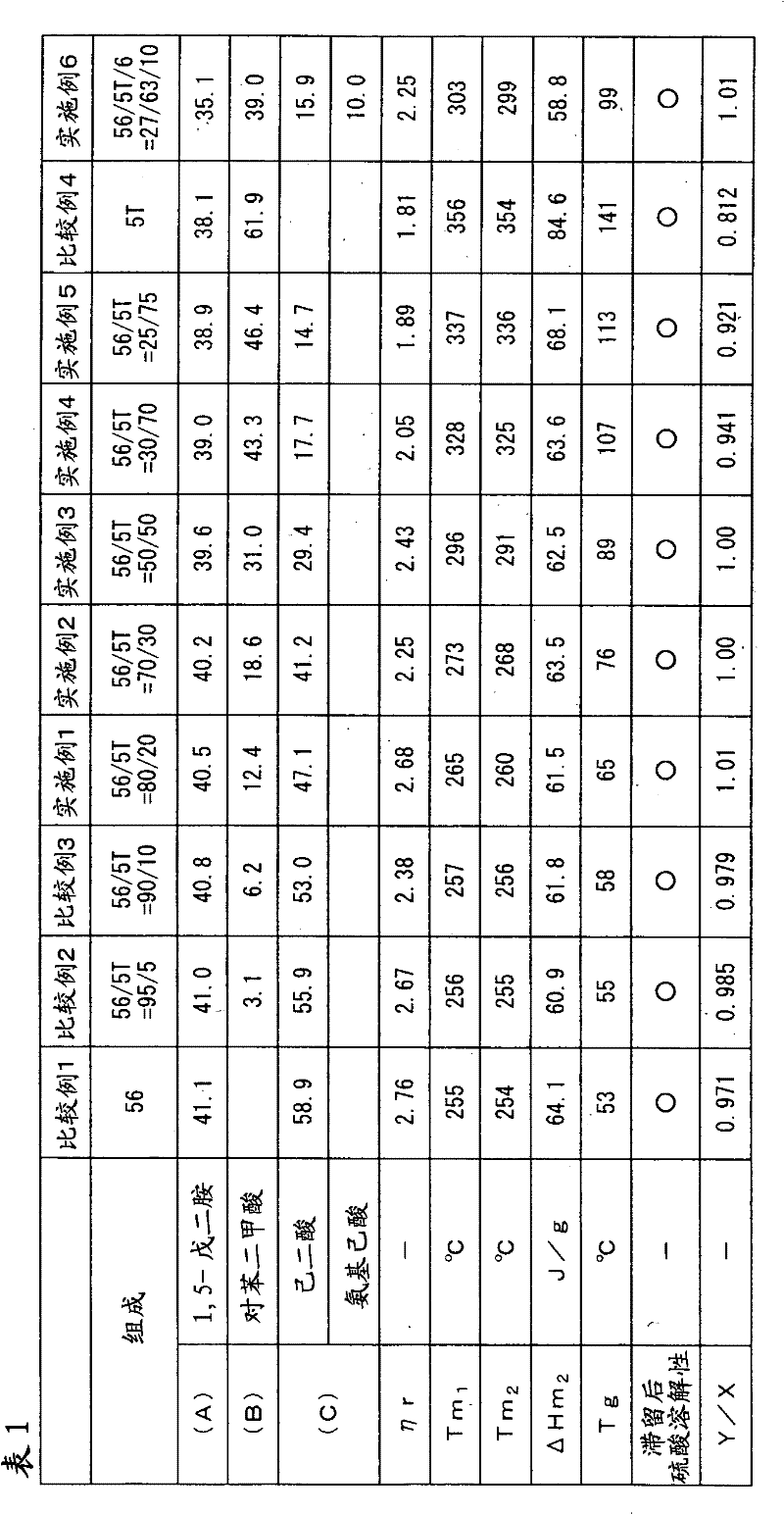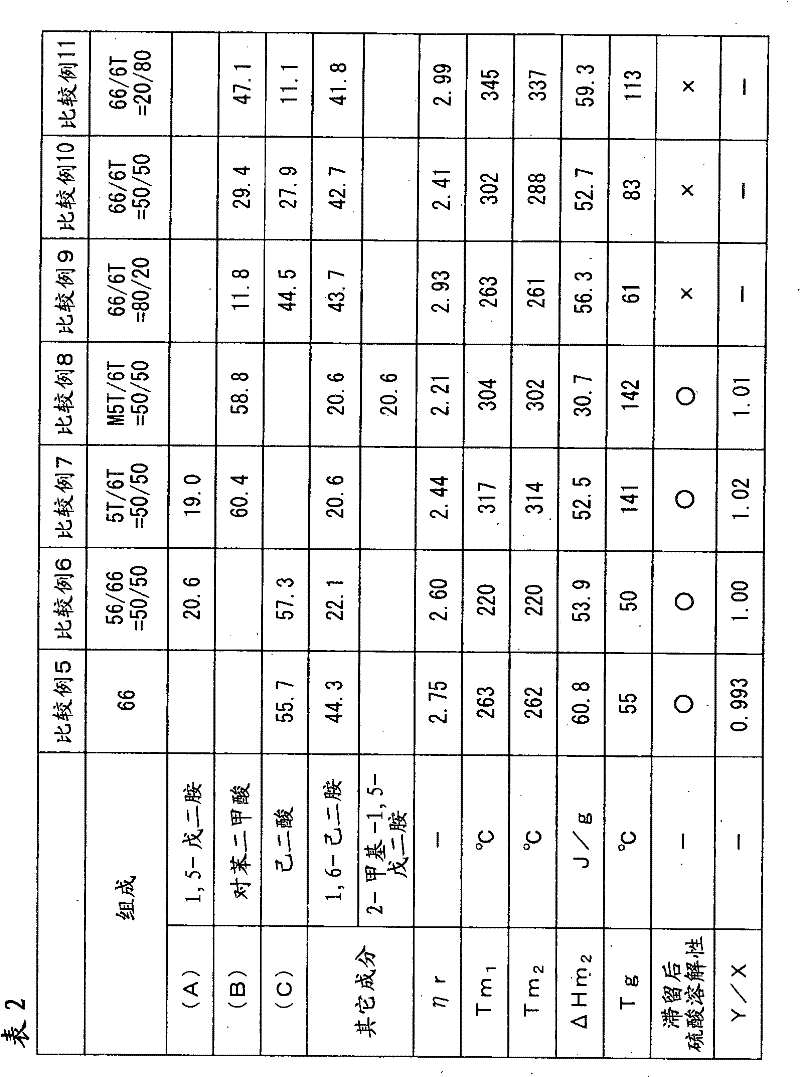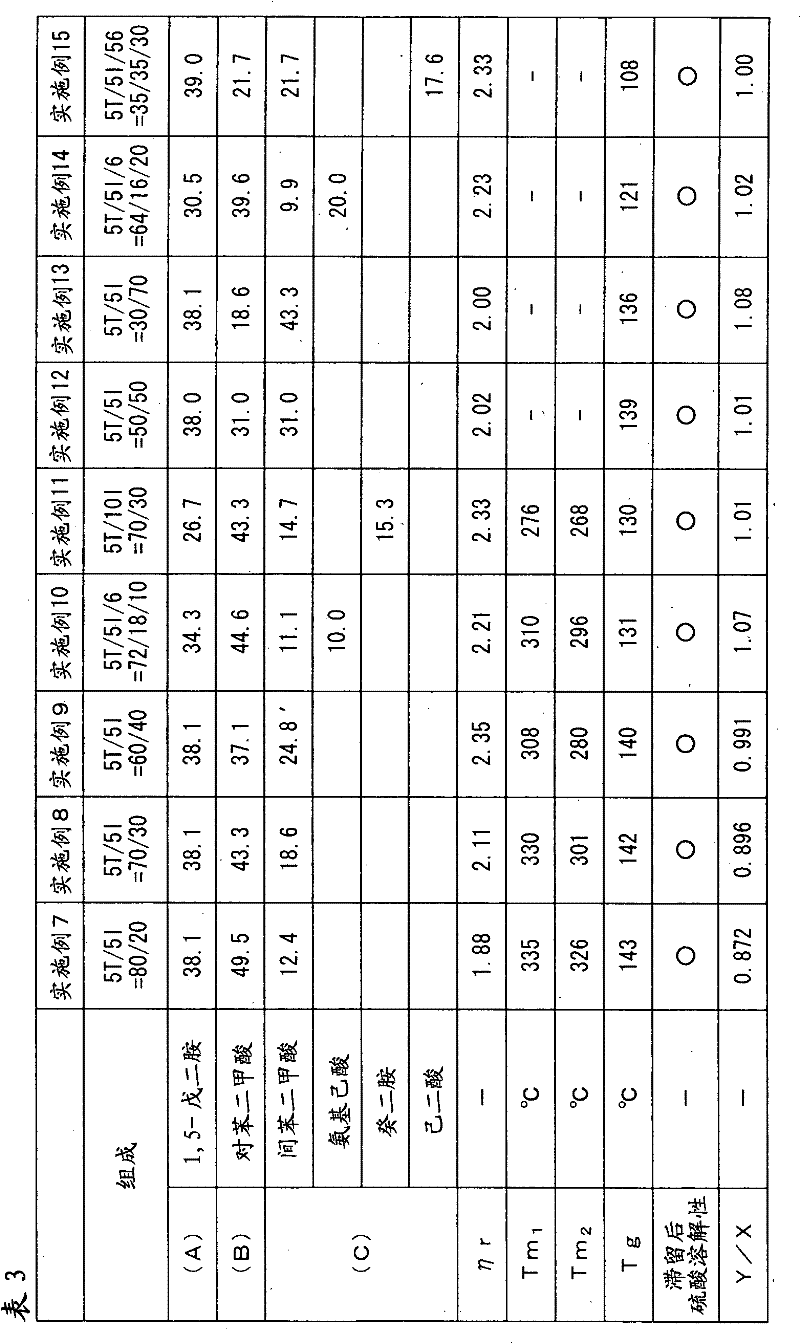Polyamide resin, composition containing polyamide resin, and molded articles of polyamide resin and composition
A technology of polyamide resin and composition, which is applied in the field of polyamide resin, can solve the problems of poor melt retention stability and narrow melting point range, and achieve the effect of excellent melt retention stability
- Summary
- Abstract
- Description
- Claims
- Application Information
AI Technical Summary
Problems solved by technology
Method used
Image
Examples
Embodiment
[0097] The polyamide resins produced in Examples and Comparative Examples were evaluated by the following methods.
[0098] [Relative viscosity (ηr)]
[0099] In 98% sulfuric acid, the measurement was performed at a concentration of 0.01 g / ml at 25° C. using an Ostwald viscometer.
[0100] [Melting point (Tm), glass transition temperature (Tg)]
[0101] About 5 mg of a sample was taken using Robot DSC RDC220 manufactured by Seiko Instruments, and measured under the following conditions in a nitrogen atmosphere. The temperature (melting point: Tm 1), kept at a temperature 40°C higher than the melting point for 2 minutes, then cooled to 30°C at a cooling rate of 20°C / min, and kept at 30°C for 3 minutes. Next, the temperature (melting point: Tm 2 ) and heat (heat of fusion: ΔHm 2 ). In addition, for a sample quenched with liquid nitrogen from a molten state 30°C higher than the melting point of the polyamide resin, the middle point of the step-shaped endothermic peak of the...
reference example 1
[0112] Reference Example 1 (Preparation of Lysine Decarboxylase)
[0113] The cultivation of the Escherichia coli JM109 strain was carried out as follows. First, 1 platinum circle of the strain was inoculated into 5 ml of LB medium, and pre-cultured by shaking at 30° C. for 24 hours. Next, 50 ml of LB medium was added to a 500 ml Erlenmeyer flask, and steam sterilization was performed at 115° C. for 10 minutes in advance. The above-mentioned strains that had been pre-cultured were further inoculated in this medium, and cultured for 24 hours while adjusting the pH value to 6.0 with 1N hydrochloric acid aqueous solution under the conditions of an amplitude of 30 cm and 180 rpm. The bacterial cells thus obtained were collected, and a cell-free extract was prepared by ultrasonication and centrifugation. The activities of these lysine decarboxylases were measured according to the general method (Kenji Satoda, Haruo Mizono, Biochemical Experiment Lecture, vol. 11, P. 179-191 (1976...
reference example 2
[0114] Reference example 2 (production of 1,5-pentanediamine)
[0115] Prepare an aqueous solution with 50 mM lysine hydrochloride (manufactured by Wako Pure Chemical Industries), 0.1 mM pyridoxal phosphate (manufactured by Wako Pure Chemical Industries), 40 mg / L-roughly purified lysine decarboxylase (prepared in Reference Example 1) 1000 ml of the obtained aqueous solution was reacted at 45° C. for 48 hours while maintaining the pH at 5.5 to 6.5 with 0.1 N aqueous hydrochloric acid solution, thereby obtaining 1,5-pentanediamine hydrochloride. 1,5-Pentanediamine hydrochloride was converted into 1,5-pentanediamine by adding sodium hydroxide to this aqueous solution, extracted with chloroform, and distilled under reduced pressure (10 mmHg, 60°C) to obtain 1 , 5-pentanediamine.
PUM
| Property | Measurement | Unit |
|---|---|---|
| glass transition temperature | aaaaa | aaaaa |
| particle size | aaaaa | aaaaa |
| melting point | aaaaa | aaaaa |
Abstract
Description
Claims
Application Information
 Login to View More
Login to View More - R&D
- Intellectual Property
- Life Sciences
- Materials
- Tech Scout
- Unparalleled Data Quality
- Higher Quality Content
- 60% Fewer Hallucinations
Browse by: Latest US Patents, China's latest patents, Technical Efficacy Thesaurus, Application Domain, Technology Topic, Popular Technical Reports.
© 2025 PatSnap. All rights reserved.Legal|Privacy policy|Modern Slavery Act Transparency Statement|Sitemap|About US| Contact US: help@patsnap.com



